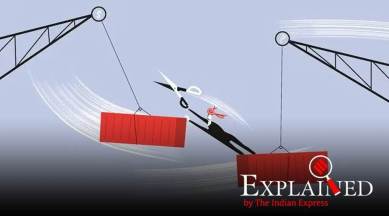Udit Misra is Senior Associate Editor. Follow him on Twitter @ieuditmisra ... Read More
© IE Online Media Services Pvt Ltd

On Monday, India decided that it won’t sign the Regional Comprehensive Economic Participation agreement. While India decided to pull out, the other 15 members of RCEP arrived at a consensus and are likely to formally announce the regional trade pact next year. The government claimed that its decision to pull out of RCEP showed “India’s rising stature in the world”.
A key reason that India forwarded for declining to sign on was the existence of trade deficits with many of the constituents of the RCEP. For instance, against the 10-member Association of Southeast Asian Nations (Asean), India’s trade deficit was nearly $22 billion in 2018. Against South Korea it was $12 billion, against Australia $9.6 billion, against Japan almost $8 billion. Worst of all is the trade deficit with China – $53.6 billion.
Simply put, the trade “balance” of a country shows the difference between what it earns from its exports and what it pays for its imports. If this number is in negative – that is, the total value of goods imported by a country is more than the total value of goods exported by that country – then it is referred to as a “trade deficit”. If India has a trade deficit with China then China would necessarily have a “trade surplus” with India.
A trade deficit means broadly can mean two things. One, that the demand in the domestic economy is not being met by the domestic producers. For instance, India may be producing a lot of milk but still not enough for the total milk demand in the country. As such, India may choose to import milk.
Two, many a time a deficit signifies the lack of competitiveness of the domestic industry. For instance, Indian car manufacturers could import steel from China instead of procuring it from the domestic producers if the Chinese steel was decidedly cheaper, for the same quality.
More often than not, the trade deficit of a country is due to a combination of both these main factors.
Not necessarily. No trade is ever balanced. That’s because all countries have different strengths and weaknesses. India may have a trade deficit with China but a surplus with Sri Lanka and Bangladesh. It all depends on whether a country is playing to its strength or not.
Trade typically enhances wellbeing all across the world by forcing countries to do what they can do most efficiently and procure (import) from the rest of the world what they cannot produce efficiently. It is important to note that China is not selling milk and New Zealand is not attempting to sell steel to the rest of the world.
Another way to look at trade deficits is to look at the outcome of trade agreements on consumers instead of producers. For instance, if cheaper and better quality milk or steel was to come into India, Indian consumers would benefit as their health improves and their cars become more affordable. Of course, Indian producers of steel and milk will cry foul but then if they are not efficient, they should be producing something else.
Of course, they do. But the question is: at whose cost?
For instance, if cheaper milk and steel from New Zealand and China, respectively, was held off by India levying higher tariffs then the people most hurt would be Indian consumers of milk and steel – a number far in excess of the number of Indian producers of milk and steel. The consumers would have to either pay a higher cost for imported steel or use equally costly or poorer quality domestic steel or indeed, go without milk (at least the poorer consumers).
That is not to say that trade doesn’t have elements that compromise a country’s strategic interests and that is why there are some commodities in which every country wants to maintain self-sufficiency. But merely levying higher tariffs or not choosing to trade do not bring about self-sufficiency. For attaining self-reliance, a country’s domestic industry has to improve and the best of this happening is when one learns from the competition.